#Estigmene acrea
Text
Moth of the Week
Salt Marsh Moth
Estigmene acrea
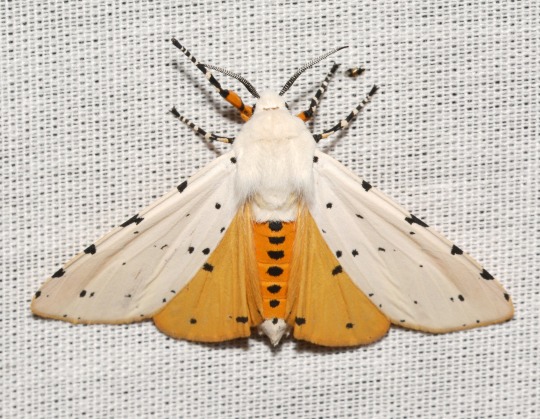
The salt marsh moth is a part of the family Erebidae. This species was first described in 1773 by Dru Drury. It is also known as the acrea moth.
Description Both male and female moths have white heads, thoraxes, and forewings with a varying pattern of black spots on the forewings, with some moths having no pattern at all. They also share an orange-yellow abdomen with a vertical line of back dots. On the male, the hindwings are the same organge yellow while on females the hindwings are white. Both males and females have three or four black dots on each hindwing.
Wingspan Range: 4.5 - 6.8 cm (≈1.77 - 2.68 in)
Diet and Habitat The caterpillar was first thought to be a pest to salt-grass, but in fact it prefers weeds, vegetables, and field crops such as dandelions, cabbage, cotton, walnuts, apple, tobacco, pea, potato, clovers, and maize. Adults do not feed.
This moth is found in North America, the Democratic Republic of the Congo, Kenya, Colombia, and Mexico. It prefers open habitats such as openings in woods, thickets, farm fields, grasslands, and marshes. It is called the “salt marsh moth” because it is common in coastal salt marshes (tidal marshes) along Pacific, Atlantic, and Gulf coasts.
Mating This species of moth does not emit pheromones from the tip of its abdomen but instead from its throat or the to of its abdomen. These moths are seen from May to August but can be seen all year in southern Florida and Texas. It is presumably during May and August they mate in most parts of their range while they mate all year round in Florida and Texas.
Yellowish eggs are laid in clusters on the host plant leaves. Females usually produce 400 to 1000 eggs in one or more clusters. It is possible to find a single egg cluster containing 1200 eggs. Eggs hatch in four to five days.
Predators This species is frequently parasitized as larvae, usually by flies in the Tachinidae family. In Arizona, the most common parasites were Exorista mellea and Leschenaultia adusta while two other parasitic flies were also seen: Gymnocarcelia ricinorum and Lespesia archippivora.
Both the larval and egg stages are oararzitized by Hymenopteran parasitoids such as Apanteles diacrisiae; Therion fuscipenne, T. morio, Casinaria genuina, Hyposoter rivalis; Psychophagus omnivorus, Tritneptis hemerocampae Vierick; Anastatus reduvii; and Trichogramma semifumatum.
A cytoplasmic polyhedrosis virus is known to harm this species but there are little data on its importance and effect.
General predators such as lady beetles, softwinged flower beetles, and assassin bugs prey on these caterpillars, but are not thought to have a large impact on population.
Fun Fact This species has 4 subspecies: Estigmene acrea acrea, Estigmene acrea arizonensis (Rothschild, (1910)) (Arizona), Estigmene acrea mexicana (Walker, (1865)) (Mexico), Estigmene acrea columbiana (Rothschild, (1910)) (Colombia).
(Source: Wikipedia, University of Florida, Missouri Department of Conservation)
#libraryofmoths#animals#bugs#facts#insects#moth#lepidoptera#mothoftheweek#Erebidae#salt marsh moth#Estigmene acrea
392 notes
·
View notes
Text

it is a huge year for saltmarsh moths. behold the ten i found in under a minute in my yard. what does it mean?
Estigmene acrea
2K notes
·
View notes
Note
if u haven’t done them yet, could u do the salt marsh moth :0
Moth Of The Day #122
Salt Marsh Moth / Acrea Moth
Estigmene acrea
From the erebidae family. They have a wingspan of 45-68 mm. They tend to inhabit forests, thickets, farm fields, grasslands, and marshes. They can be found in North America, the Democratic Republic of the Congo, Kenya, Colombia and Mexico.
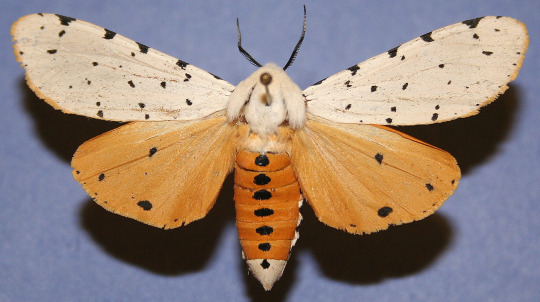
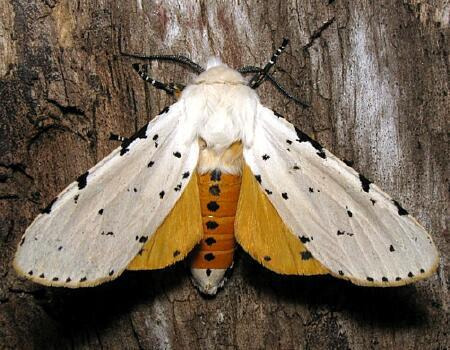
#moth#moths#lepidopterology#lepidoptera#pretty moth#nature#insect#bugs#moth of the day#motd#bug#insects#entomology#bugblr#pretty moths#erebidae moth#erebidae#salt marsh moth#acrea moth
272 notes
·
View notes
Text
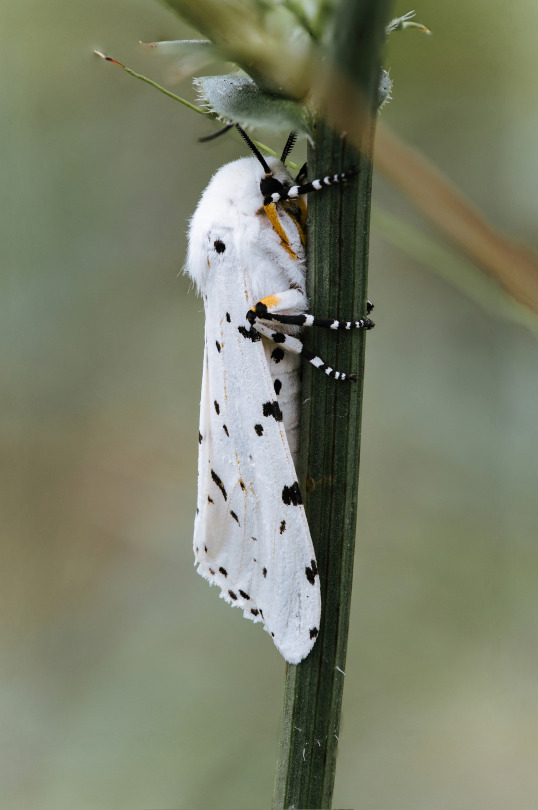
Estigmene acrea
#Queueue#Original Photography#photography#my photography#original photographer#photographers of tumblr#photographers on tumblr#lensblr#original photography blog#nature photography#nature#uncropped nature#macro#macro photography#macro photo#canon macro#cottage#cottagecore#cottage core#grandma core
158 notes
·
View notes
Text





Salt marsh moth 》 Estigmene acrea
I thought for sure I had posted the moth pics here before, but I can't find the post.
Either way, salt marsh moths are so cute! Their caterpillars.... maybe not quite as cute. 😅
I've always had an aversion to hairy caterpillars but I'm trying to work on that. His little face munching on a clover is very cute, but something about his hair makes me recoil.
Southeast Texas, 5 Mar. 2024 (moth), 12 April 2024 (caterpillar)
#moth#salt marsh moth#caterpillar species#caterpillar#moth species#salt marsh caterpillar#hairy caterpillar#moths of texas#moths#caterpillars#caterpillars of texas#wildlife#clover#amatuer mycology#mushrooms#mycology#fungi#mushroom hunting#mushrooms of texas#texas mushrooms#wild fungi#fungi of texas#fungarium#species identification#special interest#goblincore#nature photography#nature
11 notes
·
View notes
Text

Estigmene acrea | color pencils, acrylic paint, micron pen | October 2023 | Hazel Fricke
53 notes
·
View notes
Text



Some Moth caterpillar, just possibly a Salt Marsh Moth (Estigmene acrea). This one I am not at all sure of, but it's still pretty.
#nature#my photography#backyard nature#moth#caterpillar#nature photography#insects#wildlife photography
26 notes
·
View notes
Text

”Insects All Around Us” by Digital Edital Editor Kit O'Connell, originally published in the January/February 2024 issue of Texas Observer magazine:
Photography and additional reporting by Fall 2023 Reporting Fellow Paula Levihn-Coon.
The prey is already dying when the hunters arrive.
The sky is dark gray, the air thick with the threat of rain. But that hasn’t stopped over a dozen from gathering. They’re mostly, but not exclusively, older folks—frequently retirees with the ability to take a weekday morning off—and they’re armed with Digital SLR cameras and macro lenses.
Valerie Bugh crouches down over the squirming spots on the stone of the shady courtyard entrance to the Lady Bird Johnson Wildflower Center, prodding at the poisoned insects. Bugh, a gray-haired local naturalist, isn’t responsible for the state of these southern yellowjackets (Vespula squamosa), but she’ll take advantage of it for a photo opportunity. Someone on staff at the center discovered their nest and sprayed them just before the bug hunters arrived, and the entire hive is trickling out from their hidden home in a low rock wall. Bugh warns me to keep my distance from the females, who have fatter-looking bodies with stingers compared to the longer, thinner males, which normally only leave the nest for mating purposes. As I take a step back, she fearlessly kneels by their wriggling bodies, picking the males up and focusing her camera on each in turn.
“I’m trying to find one that doesn’t look dead,” she said. Soon, she’d even manage to document the hive’s queen as it haplessly tried to flee the toxins—a rare catch, though a grim beginning for a weekly ritual that largely focuses on the living.

Katherine Daniels and David Cook, volunteers, take insect photos.
Bugh is the author of 10 short fold-out pamphlets with color photos, with titles like Spiders of Texas: A Guide to Common and Notable Species and Unusual Insects of Texas: Caddisflies, Mantides, Lacewings, Walking Sticks, & More. That’s just one of her jobs: She’s also second clarinet in the Austin Opera. She’s modest about these accomplishments when asked—Bugh is too busy searching for bugs to brag about herself.
Every Thursday morning from February through mid-December, Bugh and her team of volunteers in the Lady Bird Johnson Wildflower Center Fauna Project explore a winding path, gradually aiming to cover the entire grounds over the course of a year, in order to inspect more than 650 species of native plants in the gardens and the 50-plus species of oaks in the Texas Arboretum for their occupants.
With this diversity of native plants comes a diversity in insect population too. Allowing for a few pandemic-imposed breaks and schedule changes, Bugh has otherwise been doing this consistently since 2010, during which time she’s identified almost 3,000 species of insect including over 50 bees, 345 flies, and over 500 different beetles. It’s not unusual to find a new species to add to the garden’s known tiny inhabitant list every week.
As Bugh gets moving, other bug hunters follow her in a pack. One by one and in pairs they break off from documenting spiders and beetles found clinging to the brick walls around the entrance and offices of the center. A few volunteer birders are also on-site, but for the most part, they work independently and seem invisible compared to the cheerful, chattering bug hunters. The group also documents signs of larger animals, from mammals to amphibians, but their main focus is on these tiny crawling creatures, since bugs are the most plentiful fauna present both in this garden and worldwide.

Every Thursday from 2010 to the present, Valerie Bugh leads the Fauna Project at the Lady Bird Johnson Wildflower Center in Austin, Texas.
The bug hunters move in a little cluster, calling out when they find something new for Bugh to examine. The salt marsh moth (Estigmene acrea) caterpillars are everywhere.
“If it’s a salt marsh, I don’t want to know about it,” declares Bugh dismissively, though with good humor. Their hairy bodies remind me of an asp, the caterpillar with a nasty sting. But they’re actually harmless to the touch. Bugh is just frustrated because there are too many of them. Unlike other caterpillars, the salt marsh moths will eat almost any plant, building its hairy cocoons all over.
“Every single plant is their host,” Bugh said.
By contrast, the Gulf fritillary (Agraulis vanillae), another caterpillar present in the day’s fauna count, subsists almost entirely on passion flower vines.
Bugh’s disdain for the salt marsh moth doesn’t stop her from plucking one from the greenery and posing for a photo with it. She’s happy to show off and talk about her fauna friends, even the overly common ones. As she moves around, her tone becomes more of a graduate lecture in entomology, no doubt similar to the insect walks she sometimes leads around Austin. Her volunteers are here to hone their skills at macro photography, to learn from a preeminent local expert, and to expand their naturalist knowledge. Many are members of the Texas Master Naturalist program.
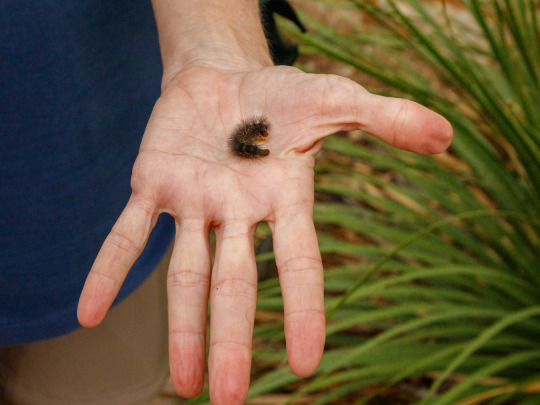
Valerie Bugh holds a salt marsh moth caterpillar (Estigmene acrea) in her hand.
But it’s a social occasion as much as anything, and the bug hunters talk among themselves around me, catching up on their lives. Two have just returned from African vacations and are excited to dish about all the great wildlife photos they got there, documenting large predatory wild beasts. But they seem just as eager to capture the living world’s small inhabitants in their lenses, too.
“It’s an insect safari,” said volunteer Katherine Baker, who told me she relished the challenge of macro photography after over a decade of experience in more general nature photography. She’s been helping count the fauna for about four years now, and always feels among kindred spirits here. But they all orbit around Valerie, returning to her for advice or an ID after wandering off.

Every Thursday for 13 years, naturalist and author Valerie Bugh, far left, has led volunteers in counting and photographing animals at the
wildflower center.
“Her knowledge surpasses everyone … she’s just amazing,” Baker said of Bugh.
The gray morning clouds are starting to burn off. As it warms up, the butterflies and others will begin to emerge from the foliage where they’re resting during the rainy, humid part of the day.
“Aha, here’s where the bumblebees are,” Bugh declares with delight as some are pointed out to her. “These are workers and look how docile they are, they’re barely moving.”
Even before the sun appears, I become aware of how the plants around us are full of life, more than first appears to the untuned eye. As I start looking at one insect, like the predatory leafhopper assassin bug (Zelus renardii), a leggy, long-bodied, hungry thing with a venomous proboscis, I spot another, smaller bug crawling along the same bit of wild grass. We allow ourselves to forget in our day-to-day lives, but insects are all over, constantly surrounding and outnumbering us.
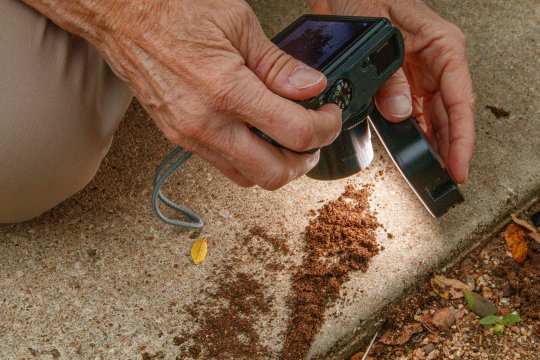
Valerie Bugh shines a small LED light on an insect.
On the day we visited, the team spotted seven different kinds of grasshoppers, two types of katydids and one cricket. Hunters often spot the American bumblebee, Bombus pensylvanicus, which is thriving in Central Texas even as its numbers dwindle elsewhere. But lately, its Sonoran cousin (Bombus sonorus) has been showing up more and more in the bug counts.
“That doesn’t bode well for desertification,” Bugh told me. “We’ve had a lot of Western species moving in, birds too, which means the habitat is great for them and a little drier than we’re used to for everyone else.”
The naturalist bug hunters are strongly aware of the harm climate change has brought on our region, and there’s a bittersweet feeling to parts of the morning, a subtle sense that someday soon could be the last day one of these fauna appear in a count.
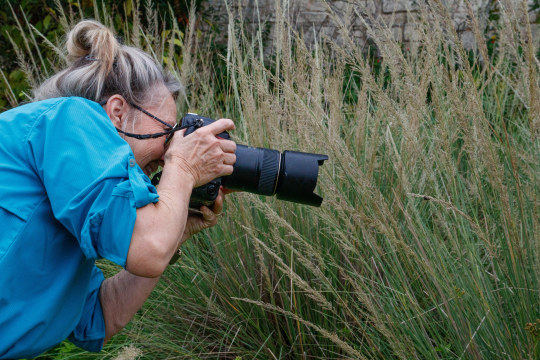
“The ecosystems are moving east, including tornado alley. It’s not great for the people in the way, and not great for us on the edge of deserts. Think of Austin without any trees. I really like trees,” Bugh says wistfully.
But most insects still spark joy when she spots them. As sure as falling leaves, the appearance of the scorpion flies (which are neither scorpions nor flies) represents the start of true Texas autumn, and they were just putting in their first appearances that Thursday in November.

Bugh can identify a great number of creatures on sight, but sometimes enlists help from collaborative internet forums and apps, or even, in one case, a book of Central American insects published in 1900.
Later, when I come home from the center, I pore over her very detailed homepage, which features a searchable spreadsheet of every creature identified by her team since 2010. I email Bugh to ask what changes she’s noticed over time.
“It is very hard to compare the past to the present since it is short term in geological time but very long term for humans,” she writes back. “Who can say what they’ve learned in over a decade? I bet it is a lot.”
#Austin#Texas#wildflowers#native plants#lady bird johnson#bugs#insects#photography#macro photography#wildlife#wildlife photography#fauna#science#entymology
2 notes
·
View notes
Text
World like this needs more butterfly/moth photos in it. Here’s a few of mine.
Salt marsh moth, Estigmene acrea
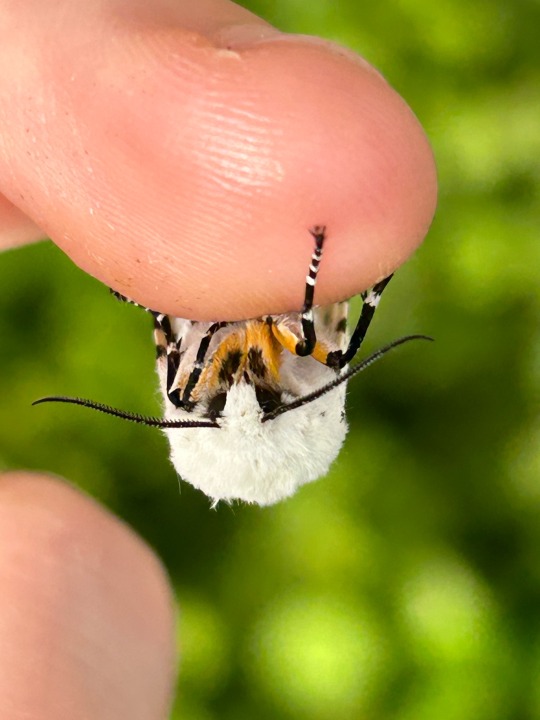


Sachem Skipper, Atalopedes campestris
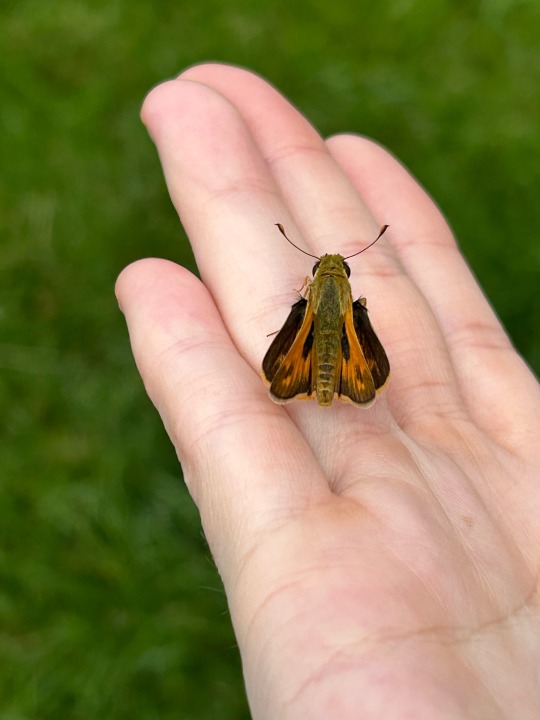

Pearl Crescent, Phyciodes tharos
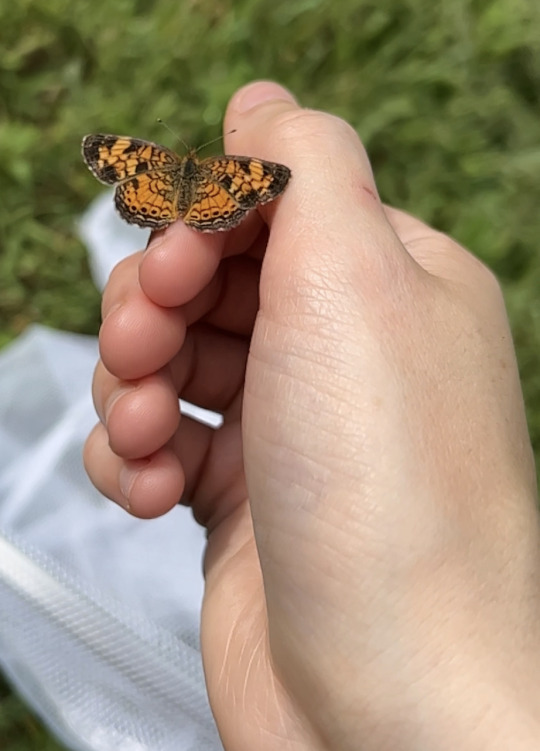
Eastern Tailed-Blue female, Cupido comyntas


Bent-Line Dart, Choephora fungorum
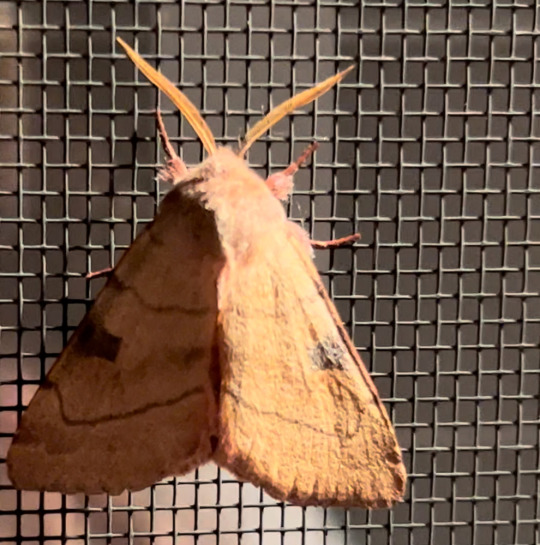

#butterfly#moths#butterflies and moths#bug photography#bugs#insects#salt marsh moth#sachem skipper#pearl crescent#eastern tailed blue#bent line dart#mah pics
6 notes
·
View notes
Text
Invertober continues!

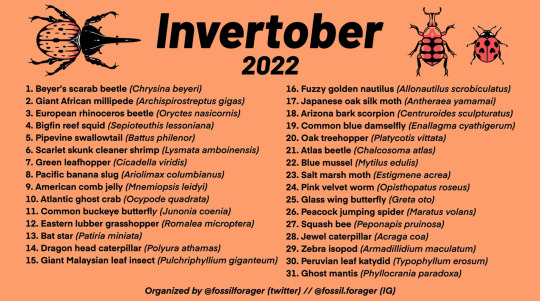
IMAGE TEXT:
Invertober 2022 Prompt List:
1. Beyer’s scarab beetle (Chrysina beyeri)
2. Giant African millipede (Archispirostreptus gigas)
3. European rhinoceros beetle (Oryctes nasicornis)
4. Bigfin reef squid (Sepioteuthis lessoniana)
5. Pipevine swallowtail (Battus philenor)
6. Scarlet skunk cleaner shrimp (Lysmata amboinensis)
7. Green leafhopper (Cicadella viridis)
8. Pacific banana slug (Ariolimax columbianus)
9. American comb jelly (Mnemiopsis leidyi)
10. Atlantic ghost crab (Ocypode quadrata)
11. Common buckeye butterfly (Junonia coenia)
12. Eastern lubber grasshopper (Romalea microptera)
13. Bat star (Patiria miniata)
14. Dragon head caterpillar (Polyura athamas)
15. Giant Malaysian leaf insect (Pulchriphyllium giganteum)
16. Fuzzy golden nautilus (Allonautilus scrobiculatus)
17. Japanese oak silk moth (Antheraea yamamai)
18. Arizona bark scorpion (Centruroides sculpturatus)
19. Common blue damselfly (Enallagma cyathigerum)
20. Oak treehopper (Platycotis vittata)
21. Atlas beetle (Chalcosoma atlas)
22. Blue mussel (Mytilus edulis)
23. Salt marsh moth (Estigmene acrea)
24. Pink velvet worm (Opisthopatus roseus)
25. Glass wing butterfly (Greta oto)
26. Peacock jumping spider (Maratus volans)
27. Squash bee (Peponapis pruinosa)
28. Jewel caterpillar (Acraga coa)
29. Zebra isopod (Armadillidium maculatum)
30. Peruvian leaf katydid (Typophyllum erosum)
31. Ghost mantis (Phyllocrania paradoxa)
47 notes
·
View notes
Text
Lepidoptera time!
starting with skippers



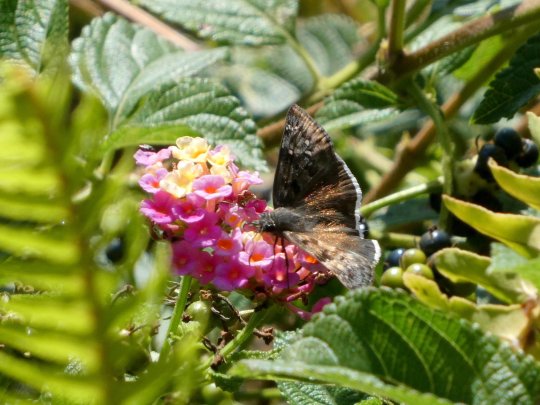

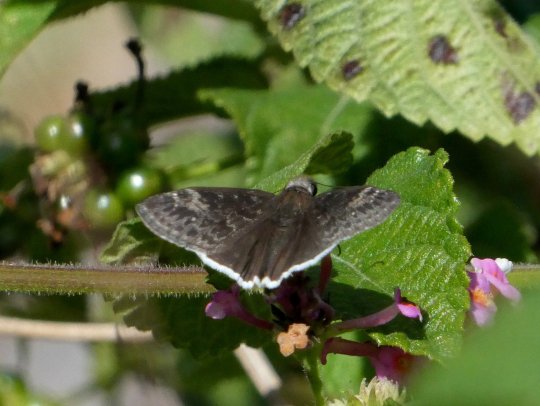
Burnsius albescens, Hylephila phyleus, Lon melane, Erynnis tristis, Panoquina errans, Erynnis funeralis
couple of little guys
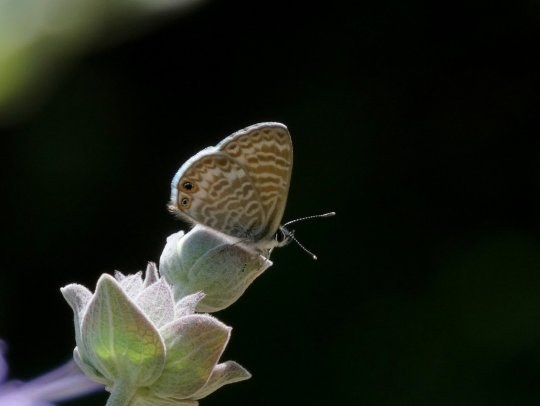

Leptotes marina, Strymon melinus
bigger guys
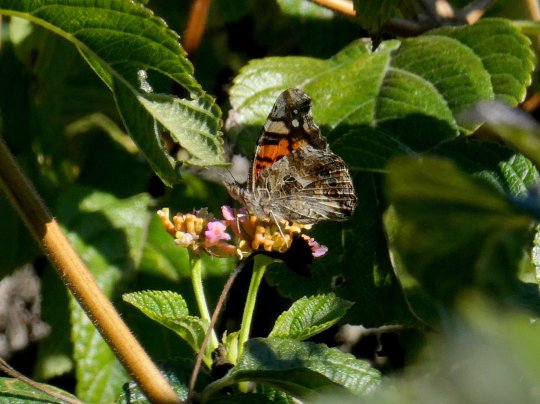
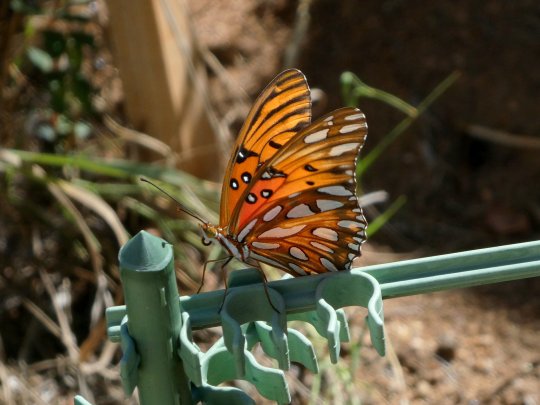




Vanessa annabella, Dione vanillae, Papilio rumiko, Nymphalis antiopa, Danaus plexippus, Phoebis sennae
moth time! starting with big and medium size


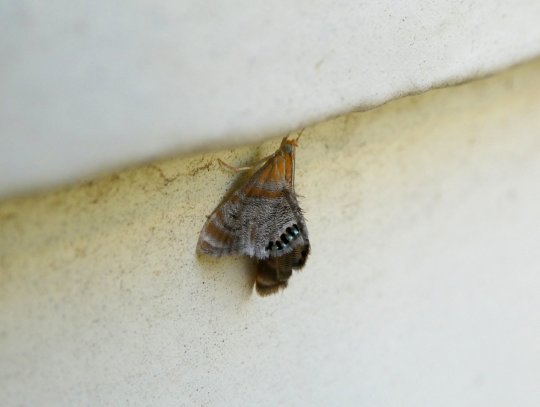
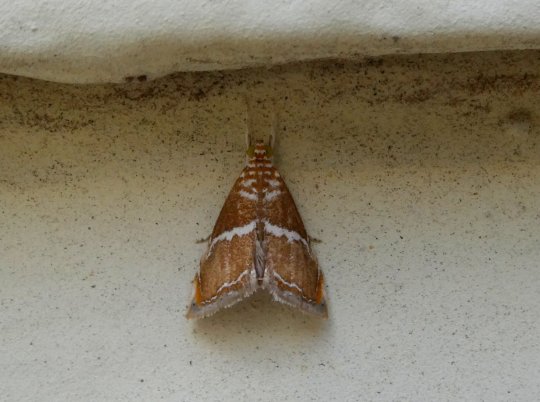

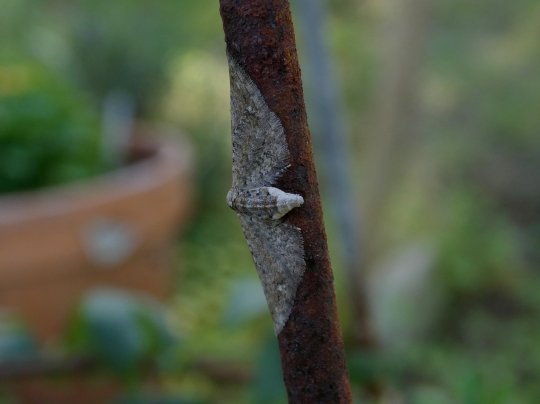
Arachnis picta, Chloridea virescens, Dicymolomia metalliferalis, Abegesta remellalis, Spoladea recurvalis, pug moth of some kind
little guys






Plutella xylostella, Lineodes integra, knot-horn moth of some kind, Crambus sperryellus, plume moth, crambid snout moth of some kind
caterpillars!




Estigmene acrea, Dione vanillae, tiger moths of some kind, Oedemasia sp.
#photography#insects#bugs#moths#butterflies#lepidoptera#caterpillars#animals#invertefest#monarch#swallowtail#tiger moth#skipper#gulf fritillary
3 notes
·
View notes
Text

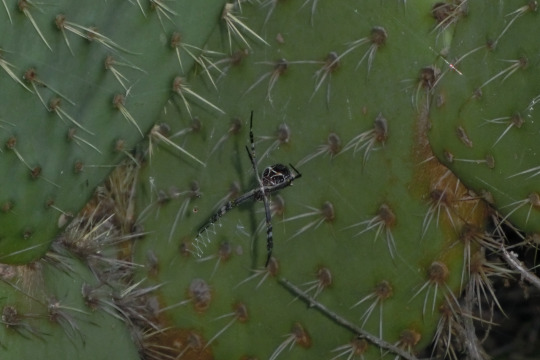

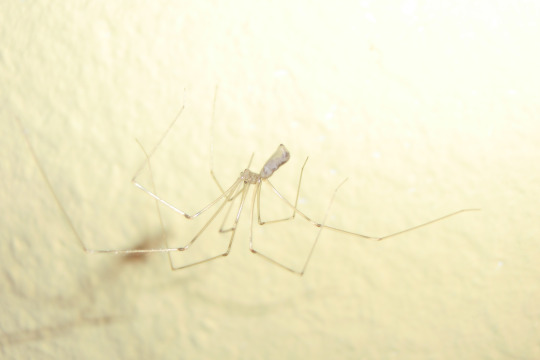




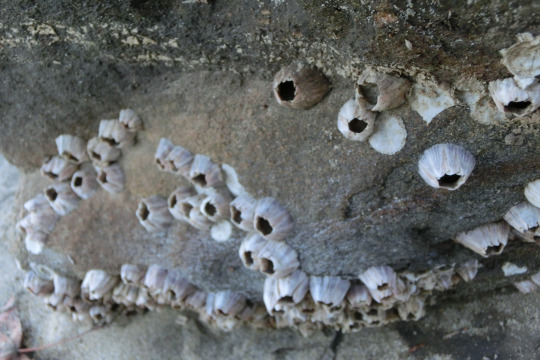

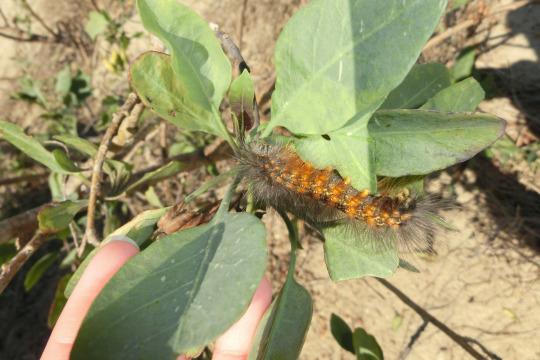
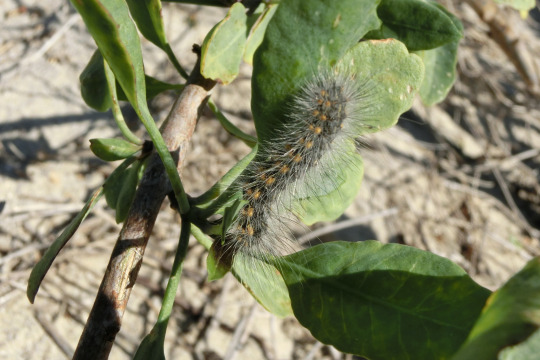


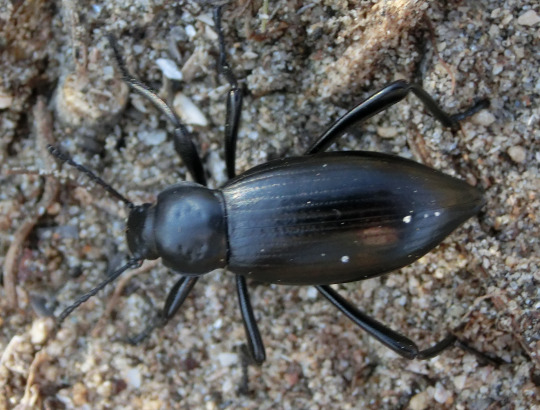

The Bugs and Creatures I've seen so far this Christmas. The beetle is my favorite - I think the picture is gorgeous. Bonus: a dinosaur who is judging me pretty hard.
@onenicebugperday I tried to submit some of these to your blog but Tumblr wasn't cooperating - I hope you appreciate the Creatures anyway! No IDs necessary.
The first spider is Argiope argentata - this isn't a great picture but it is a fantastic spider, one of my favorites. It has a beautiful silver - literally silver, literally shiny - abdomen with these sort of yellowish spots that look like they're glowing from inside. I wish I could get the perfect shot of it, but unfortunately it lives in the middle of cacti and I do NOT want to get spiked.
The second spider - the spindly one - is some kind of cellar spider, from the family Pholcidae. It is my roommate and it lives on my bedside table here.
The crab is a swimming crab, or rather the shed skin of a swimming crab. By the size of the tail (small) we can tell this belonged to a male crab.
The caterpillars are all the larva of Estigmene acrea, the saltmarsh tiger moth.
IDK what species the beetle is but it's what we call a "stink beetle" around here. I've always been skeptical of this because I well and truly pissed that beetle off but I didn't smell anything.
And I think the dinosaur is a Red-Shouldered Hawk.
If anyone wants to correct my identifications or add to them, I'd love to hear.
4 notes
·
View notes
Text
here’s a poem i wrote, decipher if you wish:
estigmene acrea
crawls it’s way up the chair leg,
in desire for something it does not know
“careful,” says my grandfather,
“it’ll get ya if you touch it, they sting.”
so i don’t.
16 years i live, and
i do not touch the wooly bear.
heat compounds as a furnace burns,
hot with coals of imperfection,
and flames of desire,
and i cannot feel my own rage.
the bears are back.
i singe with passion, and hatred, and disdain, and pride,
and my hand lay soft on the feeble beast.
awaiting the satisfaction of the pain i so deeply desire, maybe in vain, i weep.
estigmene acrea
do not sting.
0 notes
Text
Moth bitty: Swap Gaster
UnderSwap Gaster Moth
Name: Acrea
Species: Salt Marsh Moth(Estigmene acrea)
Size: 5 - 6 inches tall
Personality: Excitable, energetic, friendly,
Likes: Being around other moth bitties, dust baths, being around any other bitty,
Dislikes: Being wet, having their wings touched, being alone, being bored, being inside to long,
Compatibility: These bitties are extremely social and affectionate with other bitties and people!
They are pretty energetic and can stay up for a little while after the sun comes up, but dont expect them to not take any naps! They take a lot of them if they're up during the day!
These bitties absolutely love to do different things! But you must be careful not to get them into the glue and paints when doing different fun activities
They can get bored pretty easily so it's best to not have a super strict schedule when you adopt and Acrea!
These bitties aren’t as bothered about being wet like others! Often times they will even play in it for a few minutes! But please dry them off quickly before dusting them again!
Additional info: Moth bitties are strictly nocturnal and have trouble getting around and staying awake during the day!
They also use the moon and stars to know where they are so bright lights can confuse them! It is best to watch them when outside!
Zone: Flowerfield, Apiary, Fairy Forest,
In Universe: They are seen as great beginner moth bitties!
Difficulty: Beginner
0 notes
Text
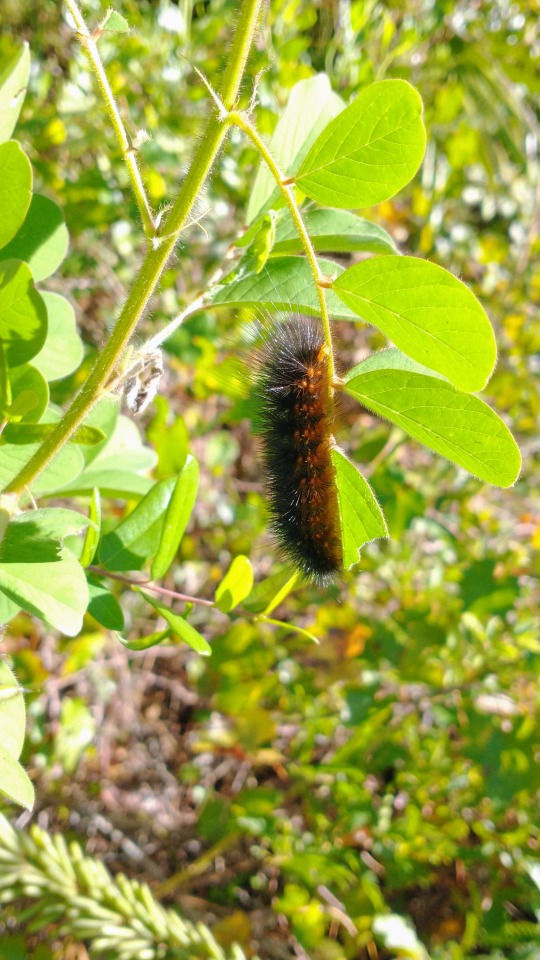
Fluffy creature sighting, likely a Salt Marsh Moth (Estigmene acrea)
0 notes
Text



1. Isabella Tiger Moth (Pyrrharctia isabella), 2. Salt Marsh Moth (Estigmene acrea), 3. Eastern Tent Caterpillar Moth (Malacosoma americana)
1 note
·
View note